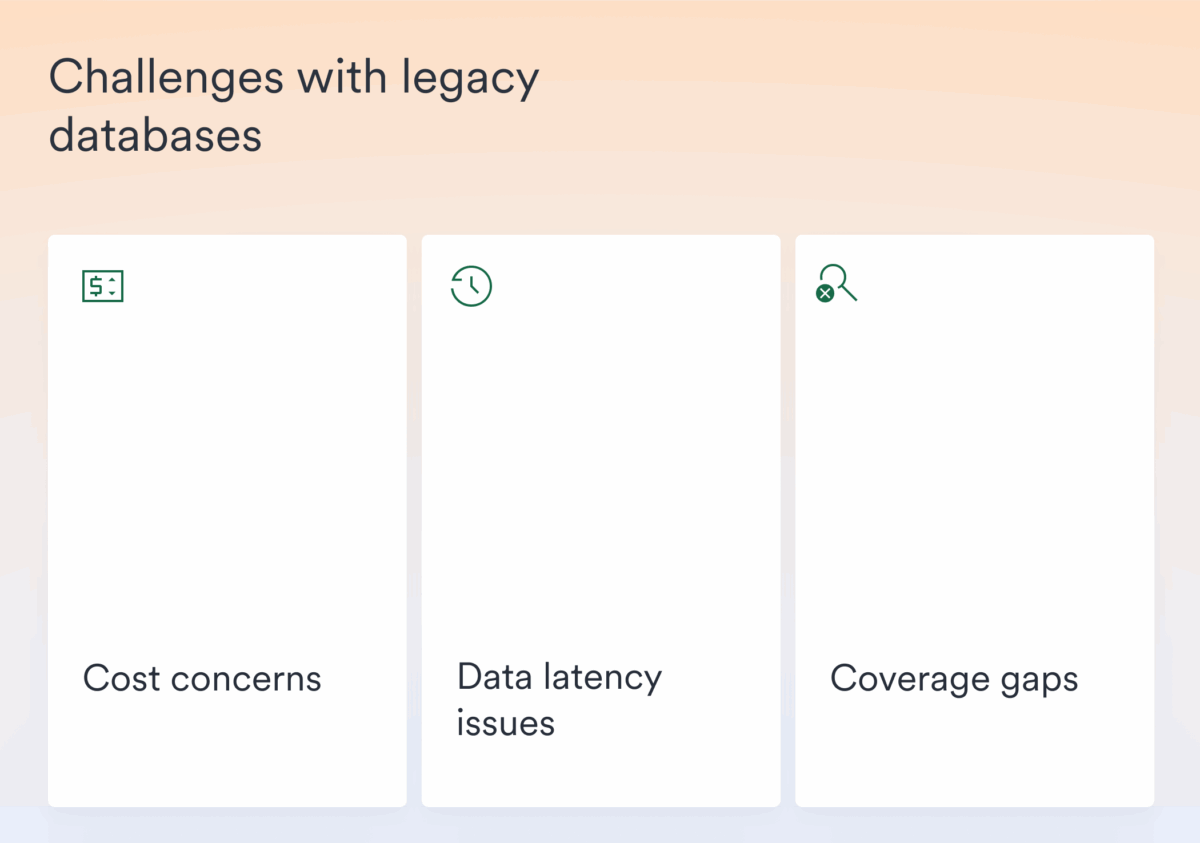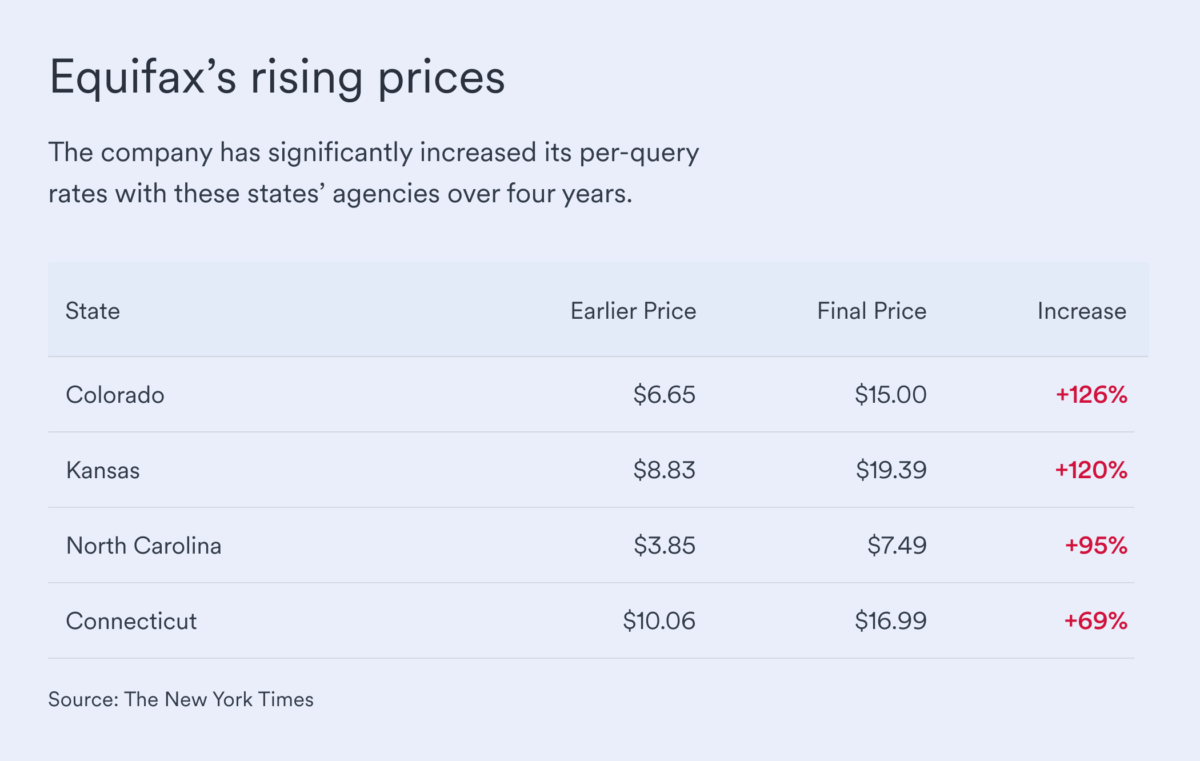New SNAP requirements are shifting financial responsibility from the federal government onto states—making direct-source verifications an operational necessity
State agencies administering SNAP benefits are facing a fundamental shift in their accountability for verification accuracy.
Under recent legislative changes—specifically, the One Big Beautiful Bill Act passed in July 2025—states must now meet stricter error rate thresholds on their benefits calculations or face substantial penalties. This is a change that’s forcing state agencies to reconsider the way they verify applicant eligibility.
The stakes are notably high. States with payment error rates at or above 6% will be required to pay for a portion of SNAP benefits themselves, ranging from 5% to 15% of benefit costs, depending on how far their error rate exceeds the threshold. For many states, this can represent up to a 768% increase in total costs, adding up to millions or even billions of dollars in new annual expenses.
According to recent USDA data, only five states are currently reporting error rates below the 6% threshold, and the national average sits at nearly 11%. That means the vast majority of states are facing steep penalties starting in October 2027.
This post explores the pressing challenge new error requirements pose for state agencies, why legacy verification tools fall short, and how direct-source verification technology offers the only viable path to meeting accuracy standards while keeping costs at bay.

Understanding the 6% error rate threshold
The SNAP payment error rate measures how accurately states determine eligibility and calculate benefit amounts for participating SNAP households. Error rates are a reflection of administrative accuracy in processing applications and maintaining proper documentation.
Under new requirements established by the One Big Beautiful Bill Act, states face a tiered penalty structure based on their level of error:
- 6% to 8% error rate: States must pay for 5% of all SNAP benefits.
- 8% to 10% error rate: States must pay for 10% of benefits.
- Above 10% error rate: States must pay for 15% of benefits.
To put this into perspective, per the USDA, 25 states and the District of Columbia reported payment error rates of 10% or higher in 2024, 13 states reported rates between 8% and 10%, and seven states reported rates between 6% and 8%. Only five states came in below the 6% threshold.
For a state like Washington, which distributes approximately $167 million in SNAP benefits each month—or just over $2 billion each year—crossing into the 8–10% error rate range would cost more than $200 million annually in penalties. And pushing the error rate above 10% would make that over $300 million in new costs.

What makes new requirements particularly challenging
Several factors are converging to make these new accuracy standards especially difficult for states to meet. These include:

Stricter error definitions
Previously, errors under $57 per household monthly were excluded from payment error rate calculations. The new legislation eliminates this tolerance margin for smaller inaccuracies, meaning even minor mistakes that were disregarded before will now count toward a state’s error rate.
This change alone is expected to increase measured error rates across all states.
Reduced federal administrative support
While states are being held to higher accuracy standards, the federal match rate for administrative costs will be cut in half from 50% to 25%. This means states will have less funding available to invest in the staff, training, and technology they need to improve accuracy.
Increased caseload complexity
At the same time, the modern benefits landscape is more complex than ever. Applicants increasingly work in gig economy roles, hold multiple jobs, or have variable income streams that traditional verification methods struggle to capture accurately.
Making things even more challenging, the One Big Beautiful Bill Act expanded SNAP work requirements, mandating that able-bodied adults without dependents (ABAWDs) must work, train, or volunteer for at least 80 hours per month to maintain eligibility. That means states must now verify not just that applicants are employed, but that they’re meeting this specific hourly threshold each month—adding another layer of complexity to an already difficult verification process.
Manual verification processes that might have worked for traditional W-2 employees with a single, full-time employer can’t necessarily scale to account for today’s more diverse workforce or these tricky new hourly verification requirements.
Manual verification processes
Many state agencies still rely heavily on manual verification processes to assess benefits. That means staff are forced to chase down paystubs, contact applicants’ employers, reconcile conflicting documents, and enter data into multiple systems by hand. These manual touchpoints create many opportunities for errors to creep in while also consuming significant amounts of staff time and energy.
When documentation is incomplete, illegible, or inaccurate, caseworkers must go back and forth with applicants—requesting corrections, clarifying discrepancies, and waiting for resubmissions—often multiple times. This back-and-forth not only delays benefit delivery for eligible applicants but also consumes significant staff time that could be spent handling other cases.
The scale of the problem is evident in the numbers. Currently, when a state agency has a payment error rate of 6% or above, they can work with USDA on a corrective action plan. But with 44 states required to submit corrective action plans for 2024, it’s clear the traditional approach to improving accuracy isn’t working as it should.
Why legacy databases can’t solve the problem
Faced with these pressures, some states may consider investing more heavily in database verification tools like The Work Number (TWN), which buy and then resell consumers’ income and employment data.
But this approach comes with its own set of challenges, including:
- Cost concerns: The financial burden of verifying through databases like TWN is quickly becoming untenable for many states. According to a recent investigation from The New York Times, not only does Equifax (TWN’s parent company) see the new SNAP work requirements as a “massive” business opportunity, the company has made it a practice to steadily increase pricing in recent years. Some states have seen their costs nearly double over the last two years alone, with others experiencing increases of nearly 400%.
When you’re a state agency processing thousands of verifications each month, these costs can add up quickly—potentially rivaling or even exceeding the cost of the legislative penalties themselves. Michigan, for instance, is on track to spend over $12.8 million with TWN this year, while Virginia is projected to spend almost $24 million.
- Data latency issues: TWN’s database is updated every pay cycle, but most pay cycles are two weeks or longer. That means the income and employment data in a TWN report could be weeks or even months old by the time it reaches an evaluator’s desk.
For applicants whose employment or income situation has recently changed, this lag can lead to gross inaccuracies.
- Coverage gaps: Database solutions may not have records for all employers, particularly smaller businesses and gig platforms. More critically, they often lack access to the granular datasets states now need—like the number of hours applicants worked per month—to verify in compliance with the new 80-hour work requirements. Without access to shift-level or hour-level data, states are left falling back on manual verification processes for a significant portion of their cases.
The core issue here is that legacy databases weren’t designed for our modern workforce. They often struggle to verify gig workers, independent contractors, and employees with multiple income streams, making them unable to keep up with the real-time accuracy standards that new error thresholds demand.

Source: The New York Times
Direct-source verifications are now an operational necessity
For states facing these new accuracy requirements, modernization is no longer about keeping up with the latest tech trends. It’s about operational survival. Automated, direct-source verification solutions offer a path forward that addresses both the accuracy and the cost challenges states are now confronting.
How direct-source verifications work
Direct-source, consumer-permissioned verification solutions like Argyle connect state agencies directly to an applicant’s employer, payroll provider, or bank account and pull real-time data straight from the system of record. Instead of relying on manual processes that are prone to error or database reports that are outdated the moment they’re generated, case workers can receive current, pre-verified information in minutes.
This approach offers several advantages for states that need to meet the new 6% error threshold.
- Real-time accuracy: Data flows directly and in real time from the source of truth (an applicant’s payroll provider, employer, or bank account), eliminating the latency issues that plague database solutions. That means, if an applicant’s employment status or income patterns changed yesterday, you’ll know about it today.
- Reduced manual data entry errors: Automated data sharing eliminates transcription mistakes and other data entry oversights that can occur when staff must manually input information or transfer data from documents or spreadsheets into eligibility systems.
- Smoother applicant communication: With accurate data delivered automatically, staff spend far less time chasing down missing or incorrect documents from applicants—reducing delays and keeping applications moving without unnecessary back-and-forth.
- Comprehensive income coverage: Direct-source verification solutions pull from a vast network of integrations. For instance, Argyle’s coverage spans 90% of the U.S. workforce, including more than 30 leading gig platforms, so case workers get ongoing visibility into all of an applicant’s income sources at once. In addition, direct-source solutions can tap into granular income and employment details—including base pay, bonuses, commission rates, and shift-level data like hours worked.
- Simple reverifications: With direct-source solutions, state agencies can re-verify applicants with one click at the point of redetermination—and without incurring additional costs or administrative workloads. That means they can maintain accuracy throughout a case’s lifecycle.
Proven results across states
Argyle’s verification solution has been piloted and deployed in approximately 10 different states, with measurable improvements in both applicant experience and caseworker efficiency.
- Current data: 90% of verification reports now contain income data from the last 14 days, giving caseworkers confidence they’re making decisions based on the latest financial activity.
- Faster processing: States using Argyle have seen a 31.6% reduction in decision time and a 66% reduction in days pending post-interview.
- Ease of use: 93% of caseworkers find Argyle’s solution to be easier or as easy to use than TWN and other legacy methods, and 85% of applicants report no difficulty verifying income.
- High success rates: 99% of applicant searches successfully return results, and the median client completion time is just 6.7 minutes.
These results demonstrate that real-time data access doesn’t just improve accuracy—it creates a measurably better experience for both applicants and the agencies serving them.

The cost equation
When comparing the economics of different verification solutions, states need to consider the full picture.
Traditional databases like TWN charge usage fees, but have constant rising costs. Meanwhile, manual processes carry hidden costs in staff time, training, and quality control, as well as the opportunity costs of case workers spending hours on verifications instead of helping applicants.
On the other hand, direct-source verifications can save government agencies up to 90% compared to legacy methods. More importantly, by improving accuracy and helping states stay below error rate caps, automated verification solutions help avoid the much larger penalties that come with exceeding those thresholds.
For a state facing $200 or even $300 million in annual penalties for climbing error rates, investing in solutions that drive inaccuracies below 6% delivers immediate, measurable ROI.
The path forward for state agencies
State agencies are facing a stark and urgent challenge, as new legislation requires them to reduce their error rates while also managing tighter budgets and increasingly complex case loads. Meeting these demands with manual processes or costly legacy tools is simply not sustainable.
In sum, state agencies need to be working with verification solutions that:
- Deliver real-time accuracy able to meet today’s stricter error threshold requirements
- Provide substantial cost savings when compared to both manual processes and legacy databases
- Scale efficiently to handle growing caseloads without proportional staffing increases
- Integrate easily with systems and other tech tools to minimize the implementation burden
- Support diverse income types including from gig work, self-employment, multiple employers, and variable earnings
For states, the choice is clear. The financial penalties for inaccuracy are too substantial to ignore, and the traditional tools at their disposal aren’t designed to tackle today’s challenges. That makes modern, direct-source verifications the only realistic option.
Today, it’s not just about improving service. It’s about protecting state budgets and ensuring eligible residents can promptly receive the benefits they need.
The 6% threshold isn’t going away—at least not anytime soon. States that embrace modern verification solutions now will be positioned to meet these requirements efficiently and cost-effectively. The ones that don’t will find themselves potentially paying millions of dollars in penalties every year, which could be much better spent on serving their residents.
What’s the next step?
Ready to see how automated, direct-source verifications can help your state agency reduce error rates? Get in touch with Argyle’s expert team to learn more about our solution for government benefit programs.







